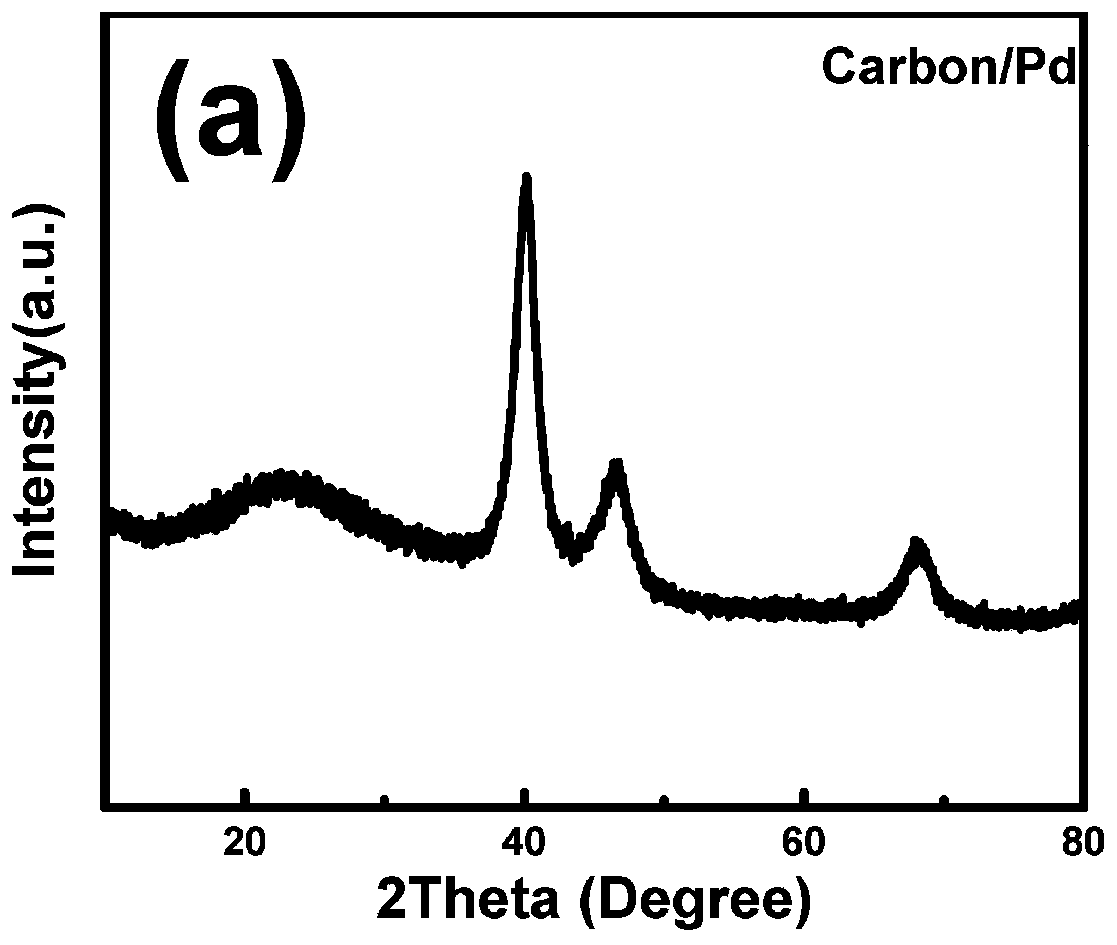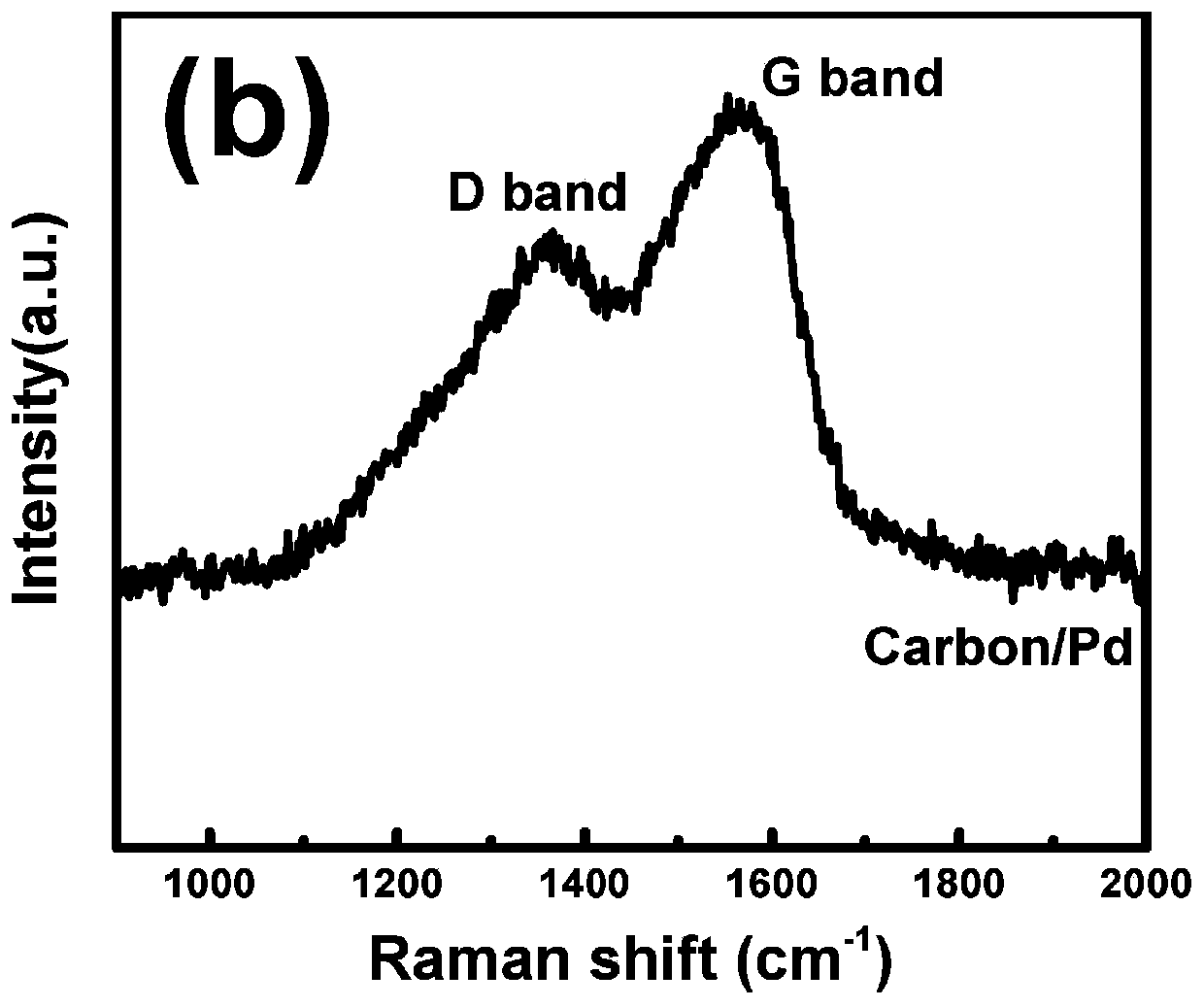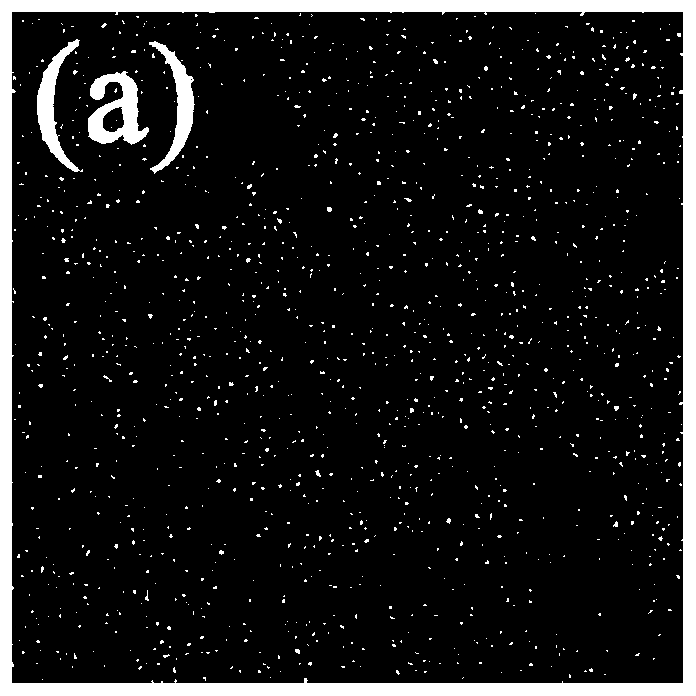Controllable synthesis method and applications of novel palladium-carbon nano composite catalyst
A technology of nano-composite and synthesis method, applied in the field of controllable synthesis of palladium-carbon nano-composite catalyst, can solve the problems of inability to effectively control the uniform dispersion of metal nano-palladium particle size, limit the activity of palladium-carbon catalyst, complicated operation, etc., and achieve excellent effect , strong light stability, good activity effect
- Summary
- Abstract
- Description
- Claims
- Application Information
AI Technical Summary
Problems solved by technology
Method used
Image
Examples
Embodiment 1
[0065] The preparation method of the palladium-carbon nanocomposite catalyst provided by the present invention adopts sucrose as the carbon source, synthesizes highly water-soluble carbon quantum dots by hydrothermal method, utilizes the reducing oxygen-containing groups on the surface of the carbon quantum dots, and has no other reducing agent Under normal circumstances, the positive divalent palladium ion Pd(II) is reduced to metal nano-palladium, and the surface groups of carbon quantum dots are cross-linked through an oil bath to form a thin layer of carbon to fix and disperse the generated palladium nanoparticles to obtain palladium carbon composite material.
[0066] Specifically include the following steps:
[0067] S1. Preparation of carbon quantum dots: Synthesize carbon quantum dots rich in reducing oxygen-containing groups on the surface by hydrothermal method, weigh 1g ± 0.0001g of sucrose and dissolve it in 40mL ± 0.01mL of deionized water to make 25mg / mL concent...
Embodiment 2
[0083] The preparation method of the palladium-carbon nanocomposite catalyst provided by the present invention adopts sucrose as the carbon source, synthesizes highly water-soluble carbon quantum dots by hydrothermal method, utilizes the reducing oxygen-containing groups on the surface of the carbon quantum dots, and has no other reducing agent Under normal circumstances, the positive divalent palladium ion Pd(II) is reduced to metal nano-palladium, and the surface groups of carbon quantum dots are cross-linked through an oil bath to form a thin layer of carbon to fix and disperse the generated palladium nanoparticles to obtain palladium carbon composite material.
[0084] Specifically include the following steps:
[0085] S1. Preparation of carbon quantum dots. Synthesize carbon quantum dots rich in reducing oxygen-containing groups on the surface by a hydrothermal method. Weigh 0.75g ± 0.0001g of sucrose and dissolve it in 30mL ± 0.01mL of deionized water. After all the suc...
Embodiment 3
[0095] The preparation method of the palladium-carbon nanocomposite catalyst provided by the present invention adopts sucrose as the carbon source, synthesizes highly water-soluble carbon quantum dots by hydrothermal method, utilizes the reducing oxygen-containing groups on the surface of the carbon quantum dots, and has no other reducing agent Under normal circumstances, the positive divalent palladium ion Pd(II) is reduced to metal nano-palladium, and the surface groups of carbon quantum dots are cross-linked through an oil bath to form a thin layer of carbon to fix and disperse the generated palladium nanoparticles to obtain palladium carbon composite material.
[0096] Specifically include the following steps:
[0097] S1. Preparation of carbon quantum dots, synthesize carbon quantum dots with rich reducing groups on the surface by hydrothermal method, weigh 1.25g±0.0001g of sucrose and dissolve in 50mL±0.01mL of deionized water to make a concentration of 25mg / mL When the...
PUM
 Login to View More
Login to View More Abstract
Description
Claims
Application Information
 Login to View More
Login to View More - R&D
- Intellectual Property
- Life Sciences
- Materials
- Tech Scout
- Unparalleled Data Quality
- Higher Quality Content
- 60% Fewer Hallucinations
Browse by: Latest US Patents, China's latest patents, Technical Efficacy Thesaurus, Application Domain, Technology Topic, Popular Technical Reports.
© 2025 PatSnap. All rights reserved.Legal|Privacy policy|Modern Slavery Act Transparency Statement|Sitemap|About US| Contact US: help@patsnap.com



